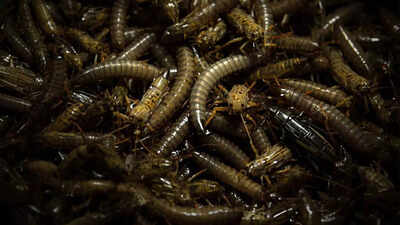Woodpeckers as nature’s living hammers: How they use their whole body to deliver powerful, injury-free pecking |

Woodpeckers are remarkable examples of natural engineering, capable of delivering rapid, powerful pecks to drill into trees, find insects, and communicate, all without causing self-injury. Although it seems as if they simply strike with their heads, a study published in the Journal of Experimental Biology shows a far more intricate system at work. The bird uses its entire body as a coordinated force-delivery mechanism, engaging the neck, head, torso, and tail in perfect synchrony. Even breathing is timed to enhance impact. This sophisticated integration allows woodpeckers to generate strikes with decelerations up to 400 g while protecting their brains and other delicate structures, demonstrating a highly efficient natural adaptation.
How woodpeckers use full-body mechanics to deliver powerful strikes
The mechanics behind a woodpecker’s strike involve full-body engagement rather than isolated head movement. As a strike begins, the hip flexors and front neck muscles provide the main forward thrust, propelling the beak into the target. Simultaneously, the abdominal muscles stabilise the torso, while the tail functions as a brace or kickstand, anchoring the bird against the tree to prevent wobbling. Muscles at the base of the skull and along the neck lock the head in place, ensuring that energy is efficiently transmitted to the tree without injuring the bird.
The secret of the strike: Woodpeckers’ breath synchronisation for maximum force
One of the most remarkable discoveries of the study is the role of breathing in enhancing the impact. Woodpeckers coordinate forceful exhalation with each strike, stiffening the core and optimising energy transfer. When tapping rapidly, sometimes up to thirteen strikes per second, the birds slip in tiny inhalations between hits, maintaining a precise breath-strike rhythm. This locomotor-respiratory coupling allows woodpeckers to maximise power while avoiding injury, an adaptation that engineers and sports scientists alike may find inspiring.
The science of Woodpecker strikes reveals muscle coordination and impact
To better understand this coordination, researchers captured eight wild downy woodpeckers using high-speed video while simultaneously recording muscle activity across the head, neck, abdomen, tail, and legs. Airway pressure and airflow measurements revealed how respiration is integrated with movement. The data confirmed that each strike is a whole-body event, with power originating in the lower body and transmitted through a rigid, stabilised chain of muscles to the beak.
How woodpeckers avoid injury
Despite the tremendous forces involved, woodpeckers rarely suffer from brain or spinal injuries. This is due to the distribution of energy across multiple body parts, the stabilising effect of the tail and abdominal muscles, and the protective bracing of the skull and neck. Additionally, woodpeckers can adjust the intensity of their strikes, delivering light taps for communication or powerful blows for drilling, all without harming themselves.
Applying woodpecker pecking mechanics to engineering and sports
Beyond the avian world, the mechanics of woodpecker pecking offer valuable lessons for humans. Engineers designing impact-resistant robots or protective gear can learn from their distributed stiffness system, while athletes may find insights into safe force application through coordinated breathing and muscle engagement. The study also provides a model for understanding other high-impact behaviours in nature, from head-butting mammals to certain insects, and even human striking sports.At first glance, a woodpecker tapping on a tree may seem simple, but it is in fact a marvel of natural engineering. The bird transforms its entire body into a living hammer: the hips drive forward, the neck braces the head, the torso is stabilised by the core, the tail anchors the body, and each breath is precisely timed to enhance force. This extraordinary adaptation allows woodpeckers to strike repeatedly with precision and power, making them one of nature’s most fascinating examples of biomechanics in action.






